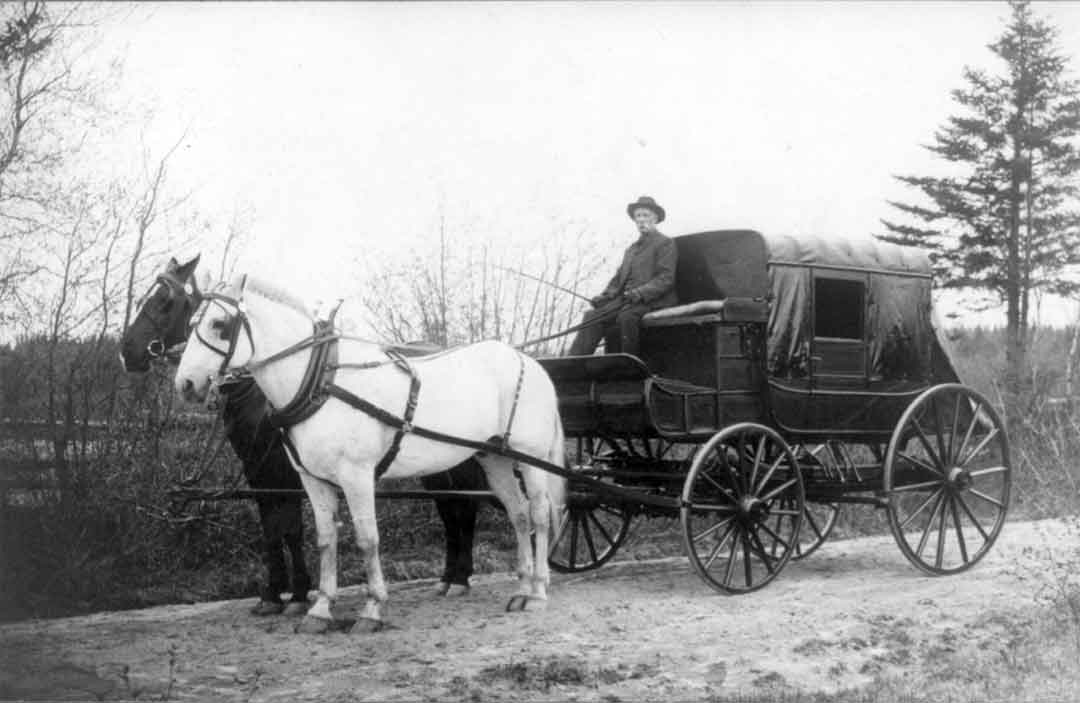Travel

Christopher Colles began publishing a series of maps in 1789, which was eventually entitled A Survey of the Roads of the United States of the America. The maps described the major roads between Albany, New York and Yorktown, Virginia; and displayed symbols to indicate taverns, blacksmith shops, churches, and jails. Colles' maps were the first systematic attempt to present a national road guide for travelers.
Travelers in stagecoaches often stopped at taverns to rest the horses, rest themselves and have something to eat. For those who stayed overnight, the innkeepers usually packed their guests several to a bed, with strangers and friends mixed together. Beds were not often clean, conditions were not often comfortable and the taverns were not often quiet. Nevertheless, most Americans on a long journey did not seem to criticize them too much. European visitors were more likely to complain about the accommodations.
While stagecoaches and other land transportation were the most common means of traveling long distances, the development of steamboats began to change the way in which Americans traveled. In 1787, James Rumsey of Maryland invented a steamboat which traveled at four miles an hour. Nevertheless, his invention, as well as John Fitch's steamboat four years later, was not commercially viable. Robert Fulton was the first to operate a commercially successful steamboat, and, in 1807, his Clermont traveled 150 miles (from New York, NY to Albany, NY) in 32 hours. In the next two decades, steamboat travel became the most common means of travel on most navigable American rivers. Steamboats were not without their dangers, however. Many were cheaply built from wood, and burned fuel wood to run the engine. The smokestacks often caused fires, as did boiler explosions, and many people lost their lives.
Those who wanted to travel to and from Europe had to rely on slow, irregular sailing ships. In 1817, however, the Black Ball Liner began a regular schedule of packet boats sailing between New York and England. Although there were never more than fifty packet ships afloat, they were so efficiently run that they were able to establish reliable and relatively frequent service. This "Black Ball Line" featured ships that sailed punctually, traveled quickly, and carried passengers, freight, money, and mail. The speed and regularity of the Black Ball Line, named for the symbol of the ship line, made it unique among the slow, irregular sailing ships of the time. Although other packet lines began transporting passengers and items between the United States and Europe, the Black Ball Line had little competition until 1848, when the Cunard Line started a regular steamship service between New York and Liverpool.
Another transportation issue that caught the interest of entrepreneurs and government alike were canals. The idea of canals fed the dream of linking the eastern and western portions of the country. George Washington was one of the earliest and most prominent figures to express interest in exploring a possible water route linking the two regions. In 1784, he set out with five others to inspect his land on the Ohio River. He became convinced that a water route was possible to join the Ohio and Potomac Rivers. In 1785, he was made president of the Potomac Company and given 25 shares in the company, which he donated to help found a national university. Although the Potomac Company was unsuccessful in building a water route between East and West, later entrepreneurs were able to construct canal and railroad links.
 >
>